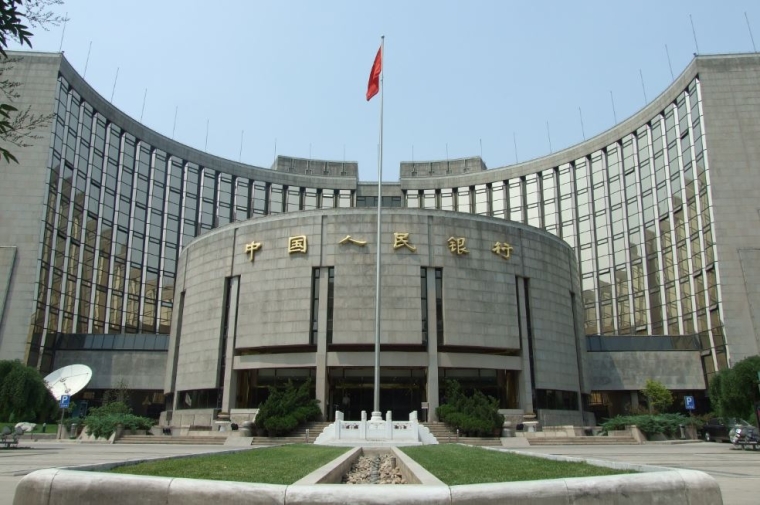
By Zhang Jun*

Weak demand is dragging down China’s economic growth. The real problem isn’t a shortage of money: the broad money supply (M2) now exceeds CN¥155 trillion ($25 trillion), or 200% of GDP, and continues to grow by 12-13% annually. Rather, the current slowdown reflects financial constraints on the real economy – a problem that will be difficult to reverse in the near future.
Ironically, these financial constraints have tightened against a background of strong financial-sector growth. Indeed, it is the financial sector’s prosperity, driven partly by the success of market-oriented innovations, that has fueled growth in China’s M2 and credit assets.
This trend can be traced back at least to 2004, when a fast-growing trade surplus and massive capital inflows, as well as relentless exchange-rate appreciation, forced the People’s Bank of China (PBOC) to resort to monetary expansion as a hedge against the resultant risks. Since then, China’s unremitting investment in infrastructure and real estate has fueled domestic demand, absorbing and reinforcing this credit growth. In 2009, China took things a step further, with a massive three-year stimulus plan that expanded bank credit to more than CN¥20 trillion.
As the money supply and financial sector expanded, so did the shadow banking system, which operates beyond the reach of risk-mitigating regulation. According to data from Moody’s Investors Service, by the end of last year, credit from China’s shadow banking system had nearly tripled relative to 2011, to CN¥65 trillion. Since 2006, shadow banks’ share of total credit soared from 10% to 33%.
But the trend toward riskier off-balance-sheet lending is visible within the official financial sector as well, largely owing to the use of innovative and weakly regulated wealth-management products that enable commercial banks to bypass regulation.
Even interbank loans, traditionally included on balance sheets, have been turned into “interbank investment businesses,” which can exist off balance sheets. The PBOC’s 2014 Financial Stability Report showed that from the beginning of 2009 to the end of 2013, banking institutions’ interbank assets surged from CN¥6.21 trillion to CN¥21.47 trillion. That 246% growth rate was 1.8 times that of total assets and 1.7 times that of total loans over the same period. Interbank liabilities, meanwhile, grew by 236% – 1.7 times faster than total liabilities and 1.9 times faster than deposit liabilities.
All of this fueled rising risk across China’s financial sector, while intensifying pressure on the real economy. Indeed, the proliferation of interbank loans and non-standard assets left a lot of money spinning within the financial system, instead of being put to use in the real economy. Making matters worse, such funding accumulated interest with every transfer, adding to the costs of shadow-bank borrowing.
Of course, banks enjoyed the easy profits from their off-balance-sheet business. Indeed, those profits have encouraged them and their shadow-bank counterparts to channel deposits into high-risk, high-return financial and real-estate investments. This can fuel huge asset bubbles and market volatility.
The stock-market crash of 2005 underscores these risks. At that time, the large amounts of capital that were suddenly pulled out of the stock market poured into real estate, with the increased leverage triggering a surge in urban housing prices.
The massive influx of money into the Chinese economy has also been used to invest in technology start-ups. But, while China undoubtedly has an interest in supporting innovative enterprises, the risk of a tech bubble is grave.
Last year, data from China’s Science and Technology Ministry showed that the number of Chinese “unicorns” (companies that are less than ten years old, yet have a valuation of over $1 billion) has soared above 130 –at least 30 more than in the US. Given the rather low share of Chinese unicorns that fulfill their promise, there is little doubt that China has a valuation problem.
The bike-sharing start-ups that have penetrated major cities over the last year, thanks to hundreds of millions of dollars in venture capital funds, amount to another example of China’s monetary conundrum. Such companies’ potential long-term profits simply do not justify the valuations they are receiving. Enabled by China’s shadow banks, these companies seem to be burning cash, say, by subsidizing customers in the hope of outlasting their competitors.
The risks generated by these activities are not lost on the Chinese authorities. The newly appointed chair of the China Banking Regulatory Commission (CBRC), Guo Shuqing, has pledged to look more closely at banks’ off-balance-sheet activities and conduct a rigorous audit of their risk assets. In the meantime, China’s securities and insurance regulators have cracked down on activities like hostile takeovers.
Such a crackdown will lead to short-term challenges. Already, regulatory tightening, combined with the PBOC’s macroprudential tools, has caused stock prices to slide. It has also rocked the bond market, causing interest rates to soar, with the default rate hitting unprecedented levels.
Yet I believe that the Chinese authorities will plow ahead with their efforts to strengthen financial regulation. They know all too well that a bank-dominated financial system cannot weather a new and chaotic crisis.
But the truth is that a regulatory crackdown, while necessary to mitigate financial risk, will not resolve China’s monetary conundrum, much less protect China’s economy from the consequences of a financial crisis in the long run. For that, China will need to identify and encourage those financial innovations that can support real economic activity. Unfortunately, on that front, not nearly enough progress has been made.
Zhang Jun is Professor of Economics and Director of the China Center for Economic Studies at Fudan University. Copyright: Project Syndicate, 2017, published here with permission.

We welcome your comments below. If you are not already registered, please register to comment.
Remember we welcome robust, respectful and insightful debate. We don't welcome abusive or defamatory comments and will de-register those repeatedly making such comments. Our current comment policy is here.